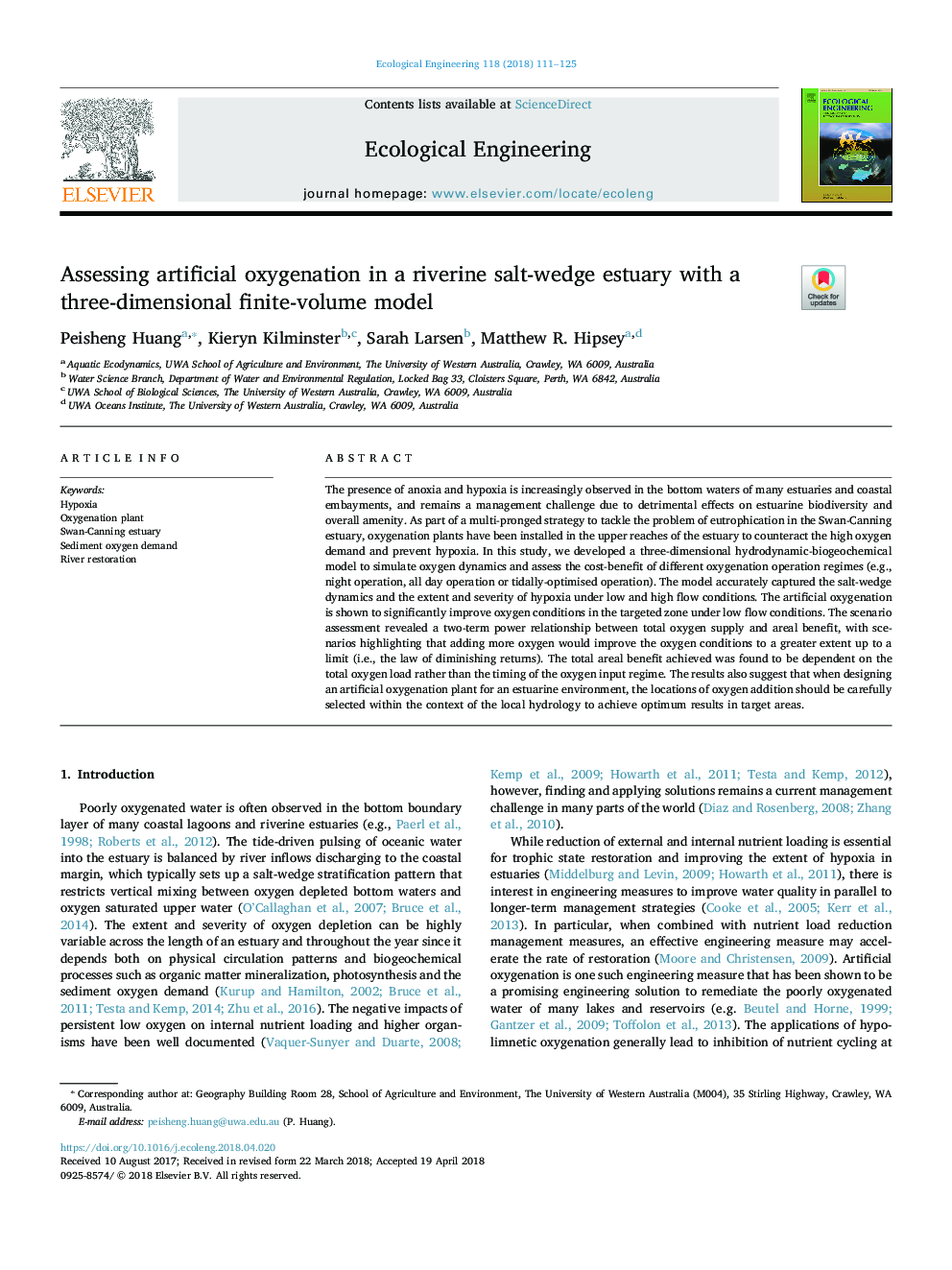| Article ID | Journal | Published Year | Pages | File Type |
|---|---|---|---|---|
| 8847834 | Ecological Engineering | 2018 | 15 Pages |
Abstract
The presence of anoxia and hypoxia is increasingly observed in the bottom waters of many estuaries and coastal embayments, and remains a management challenge due to detrimental effects on estuarine biodiversity and overall amenity. As part of a multi-pronged strategy to tackle the problem of eutrophication in the Swan-Canning estuary, oxygenation plants have been installed in the upper reaches of the estuary to counteract the high oxygen demand and prevent hypoxia. In this study, we developed a three-dimensional hydrodynamic-biogeochemical model to simulate oxygen dynamics and assess the cost-benefit of different oxygenation operation regimes (e.g., night operation, all day operation or tidally-optimised operation). The model accurately captured the salt-wedge dynamics and the extent and severity of hypoxia under low and high flow conditions. The artificial oxygenation is shown to significantly improve oxygen conditions in the targeted zone under low flow conditions. The scenario assessment revealed a two-term power relationship between total oxygen supply and areal benefit, with scenarios highlighting that adding more oxygen would improve the oxygen conditions to a greater extent up to a limit (i.e., the law of diminishing returns). The total areal benefit achieved was found to be dependent on the total oxygen load rather than the timing of the oxygen input regime. The results also suggest that when designing an artificial oxygenation plant for an estuarine environment, the locations of oxygen addition should be carefully selected within the context of the local hydrology to achieve optimum results in target areas.
Related Topics
Life Sciences
Agricultural and Biological Sciences
Ecology, Evolution, Behavior and Systematics
Authors
Peisheng Huang, Kieryn Kilminster, Sarah Larsen, Matthew R. Hipsey,
